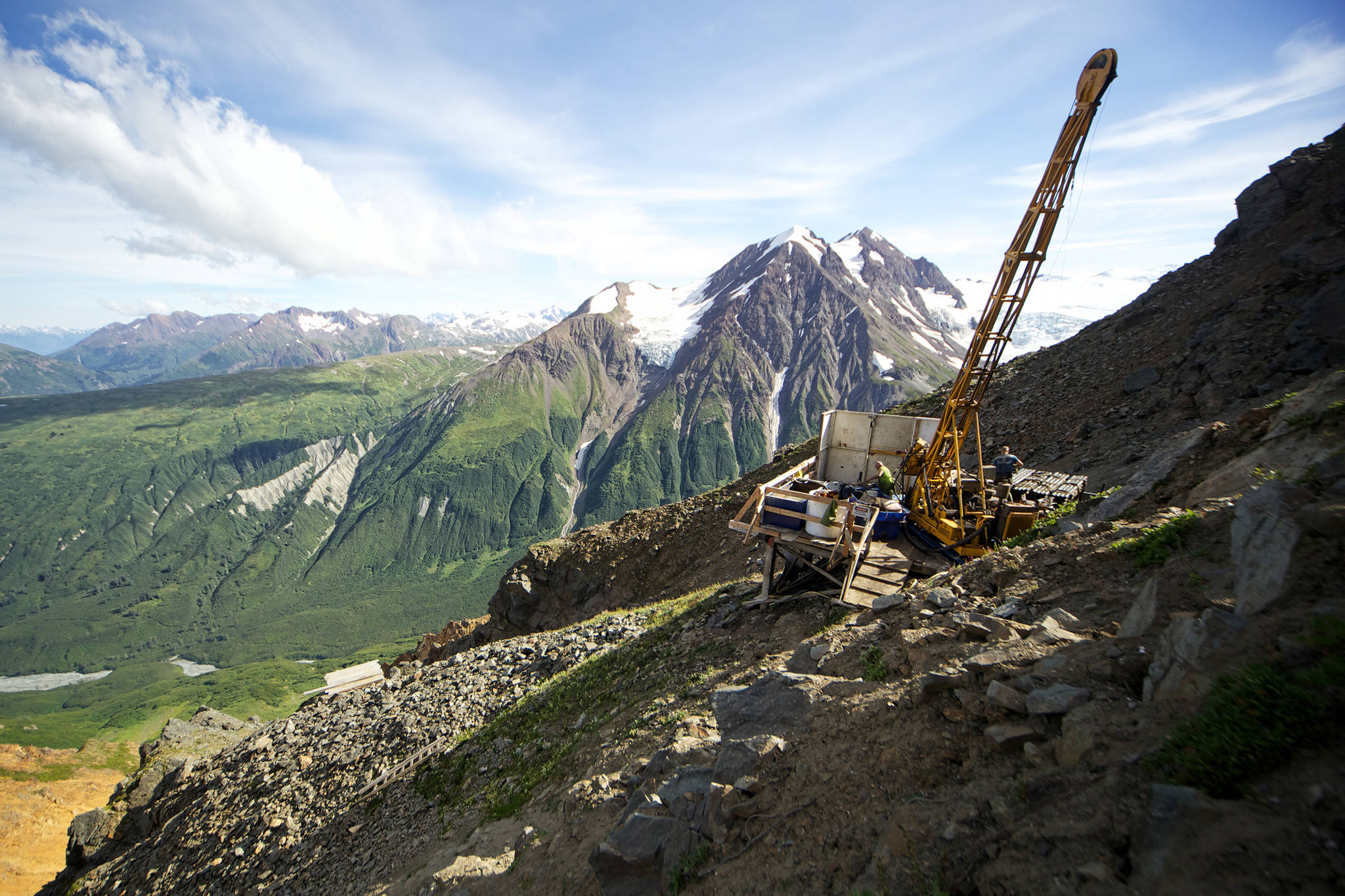After a recent court decision went in favor of those pursuing a mine in the Chilkat Valley, the company looking to build the mine is continuing to explore the area.
For decades, the prospect of a mine in the valley near Haines has been in the works. Constantine Metal Resources, took over the claim in 2006 and has begun exploration in the area. The mine, referred to as the Palmer Project, is expected to produce a copper concentrate, a zinc concentrate, a little bit of gold and silver, and barite, Vice President, Community and External Affairs Liz Cornejo said in a recent interview at the Empire.
In December 2017, the Chilkat Indian Village of Klukwan, Southeast Alaska Conservation Council, Lynn Canal Conservation Council and Rivers Without Borders filed a lawsuit against the Bureau of Land Management alleging that BLM neglected its duties in permitting expansions of the Palmer Project’s exploration in the area. Specifically, the suit accused BLM of not considering future impacts to those who live downstream from the mine and the animals including those at the Chilkat Bald Eagle Preserve.
“There are those that will say that mines and eagles and fish can’t coexist, and I certainly think they can,” Cornejo said.
[Filmmaker talks digging into proposed Chilkat Valley mining project]
This March, District Court Judge Timothy M. Burgess ruled that the BLM did not err and is not required to review future effects of a mining project before approving exploration.
The next step in the exploration is a tunnel that will go into a mountain to get a better idea of exactly how substantial the mineral deposit is. It will take a few years to develop this tunnel, Cornejo said, and a fully operating mine is still years away.
The current estimate, Cornejo said, is that the mine will produce 3,500 tons of ore per day, compared to the 2,000 daily tons produced at Juneau’s mines — Greens Creek and Kensington. The mine would be in an area designated for resource development, Cornejo explained. The area was designated that way in a 1982 consensus between conservation and mining groups that was then signed into law by then-Gov. Jay Hammond.
Cornejo said exploratory tunnels are fairly standard practice, and mentioned that Kensington did a similar tunnel when it was in the exploratory phase. She also added that there’s a decent amount of support in Haines for mining, but they’re still working on getting more people on board.
“There’s a good base of folks that really are excited about development in the valley, and then certainly a portion that are opposed,” Cornejo said. “We’d love to see 100 percent support, and hopefully with research, and with good techniques and technology and good practices, if there are fears about things or more information needed, we can come up with a plan that can increase that support.”
Perhaps the mine’s biggest supporter is Dowa Metals and Mining, based in Japan. The company joined along in 2013, spending $22 million to get 49 percent of the project. Dowa has the largest zinc smelter in Japan, so the company would also be the buyer of the concentrate produced at the mine, Cornejo said. Dowa currently buys concentrate from the Red Dog and Greens Creek mines in Alaska, Cornejo added.
[Senators send letter urging more transboundary water quality oversight from British Columbia]
Klukwan and the conservation groups aren’t going away, though, as they filed an appeal in May to the district court decision. Erin Whalen, senior associate attorney for the Earthjustice Alaska Office (which is representing the village and conservation groups) told the Empire via email Wednesday that there hasn’t been enough research done about the effects the mining could have.
Whalen also said the underground tunnel alone “creates a risk of water pollution” and that Constantine’s current plan for dealing with wastewater from the tunnel looks more like “wishful thinking than a serious plan to protect water quality.”
When Earthjustice filed the appeal in May, Chilkat Indian Village of Klukwan Tribal Council President Kimberley Strong issued a statement calling the mine a “major threat” and the Chilkat River is vital to the village’s livelihood.
“The river feeds us financially, culturally, spiritually and literally,” Strong said in a statement at the time. “This mine threatens to wipe us off the map. It is not the question of whether the mine will release pollution. It is a question of when.”
• Contact reporter Alex McCarthy at amccarthy@juneauempire.com. Follow him on Twitter at @akmccarthy.

